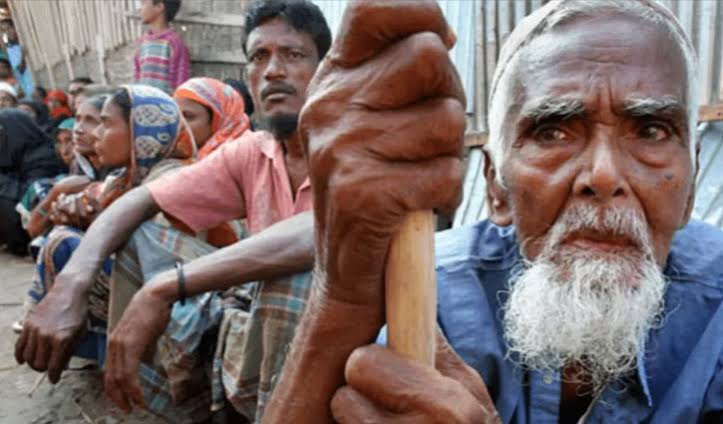Staff Correspondent
Published:2025-08-03 13:37:50 BdST
4 crore people in Bangladesh live in multidimensional poverty
Electricity has reached homes, mobile phones are present, yet children are not able to attend school. When illness strikes, going to a hospital is out of reach; access to clean water or sanitation facilities is absent.
This is the real face of multidimensional poverty. At least 40 million people in Bangladesh live under such conditions—about one-fourth of the country’s total population.
According to Bangladesh’s first-ever Multidimensional Poverty Index (MPI), while income indicates one aspect of poverty, the reality is far more complex. It is not just an economic crisis; it reflects deprivation in education, healthcare, and access to basic living standards.
The General Economics Division (GED) developed this index by analyzing data from the 2019 Multiple Indicator Cluster Survey (MICS).
The findings show that in 2019, the multidimensional poverty rate was 24%, significantly higher than the 2022 income-based poverty rate of 18.7%.
Dr. Manzur Hossain, a member of the GED, stated, “Poverty is not just about a lack of money. People might earn a small income, yet their children are not in school, they lack medical care, safe drinking water, or proper shelter. They are victims of multidimensional poverty.”
The index considers three main dimensions. These are education, health and living standards. Within each dimension, there are specific indicators. If a person is deprived in at least one-third of these indicators, they are categorized as multidimensionally poor.
Children are at the highest risk
Among children under 18, the multidimensional poverty rate is 29%, while it is 21% among adults. Although in 2012-13, this rate was close to 50%, meaning approximately 13 million children have escaped poverty traps over seven years.
This improvement is attributed to initiatives like access to electricity, housing improvements, sanitation, and increased ownership of resources.
The rural-urban divide is stark
While multidimensional poverty stands at 13% in urban areas, it is 27% in rural regions. Regionally, Khulna has the lowest rate at 15%, whereas Sylhet tops at 38%.
District-level data is more alarming
In Bandarban, the multidimensional poverty rate is 65%—meaning two out of every three people live in poverty. In Cox’s Bazar and Sunamganj, it stands at 47%. On the other hand, in Jhenaidah, it is only 9%.
Key indicators driving deprivation
Non-attendance of children in school, low years of schooling, malnutrition, and uninhabitable housing conditions are among the main factors escalating multidimensional poverty.
Particularly, housing conditions, lack of internet access, and poor sanitation—each affects over 20% of the population nationwide.
GED Secretary Dr. Manzur Hossain mentioned that this index helps identify disparities at district and divisional levels. Therefore, targeted programs can be designed for areas with higher poverty rates. Public investments and social safety net programs can be optimized based on this data.
Planning Ministry Advisor Dr. Wahiduddin Mahmud stated that the Multidimensional Poverty Index is an innovative tool that will help identify poor populations and regions, facilitating effective planning to achieve Sustainable Development Goals (SDGs).
The General Economics Division developed this index with assistance from the Bangladesh Bureau of Statistics (BBS), UNICEF Bangladesh, and the Oxford Poverty and Human Development Initiative (OPHI) of the University of Oxford.
Unauthorized use or reproduction of The Finance Today content for commercial purposes is strictly prohibited.


